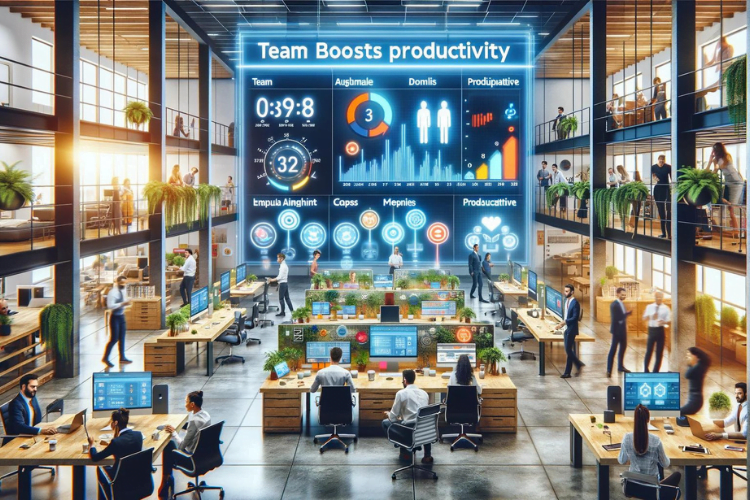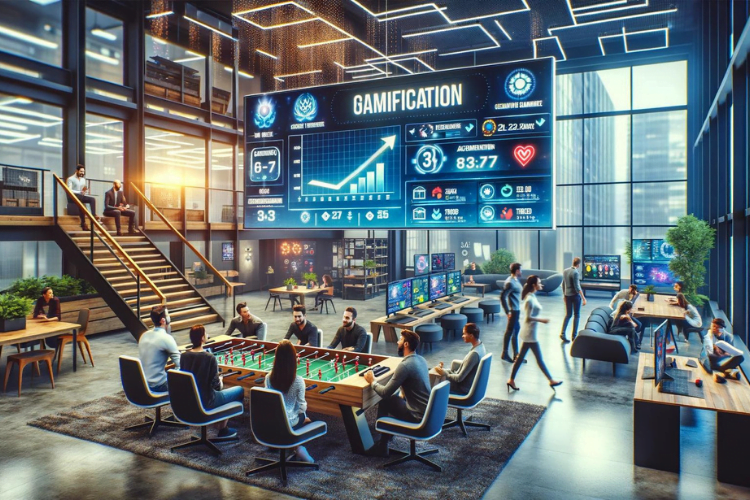The Power of Friendly Competition in Gamification

In today’s dynamic landscape, organizations are continually seeking innovative strategies to enhance engagement, motivation, and performance. One such strategy that has gained significant traction is friendly competition in gamification. By integrating game-like elements into various processes, businesses can foster a culture of collaboration and drive individual excellence. This article delves into the importance of friendly competition in gamification and how users benefit from this approach.
Understanding Gamification and Friendly Competition
Gamification involves the application of game-design elements in non-game contexts to encourage participation and engagement. These elements include points, badges, leaderboards, and challenges that mirror the rewarding experiences found in games.
Friendly competition within gamification refers to creating an environment where individuals or teams compete in a supportive and non-hostile manner. This type of competition aims to motivate participants to achieve their best while maintaining a sense of camaraderie and mutual respect.
Benefits of Friendly Competition in Gamification
1. Enhanced Motivation and Engagement
Introducing friendly competition taps into intrinsic and extrinsic motivators. Participants are driven by personal achievement and the desire for recognition among peers. This dual motivation leads to increased engagement and sustained interest in tasks.
“Gamification offers a structured approach to introducing friendly competition into the workplace.” Motivacraft
2. Improved Learning and Skill Development
Gamified systems that incorporate friendly competition can make learning experiences more enjoyable and effective. By presenting challenges and rewarding accomplishments, participants are encouraged to acquire new skills and knowledge.
“Gamified learning invites your team to gain a new perspective on learning and completing tasks.”
3. Fostering Team Collaboration
While competition might seem counterintuitive to collaboration, friendly competition can actually strengthen team dynamics. By setting collective goals and encouraging group challenges, teams learn to work together more effectively.
“Encouraging friendly competitions and challenges among team members fosters collaboration and teamwork.” Motivacraft
4. Increased Productivity
Friendly competition can lead to heightened productivity as individuals strive to improve their performance. The desire to excel and be recognized can drive employees to go above and beyond in their roles.
“Gamifying work can encourage creative and innovative thinking.” Entrepreneur
5. Positive Behavioral Changes
By rewarding desired behaviors, gamification with friendly competition can promote positive habits and routines. This approach reinforces actions that align with organizational goals and values.
“Gamification can motivate users to explore data and to learn from it.” Motivacraft
Implementing Friendly Competition in Gamification
To effectively integrate friendly competition into your gamification strategy, consider the following steps:
1. Define Clear Objectives
Establish what you aim to achieve with gamification. Whether it’s enhancing employee engagement, improving learning outcomes, or boosting sales, clear objectives will guide the design of your gamified system.
2. Design Inclusive Challenges
Create challenges that cater to various skill levels to ensure inclusivity. This approach prevents feelings of discouragement among participants and promotes widespread involvement.
3. Utilize Leaderboards and Badges
Implement leaderboards to display progress and badges to recognize achievements. These elements provide tangible symbols of success and motivate participants to strive for excellence.
“Leaderboards foster friendly competition among customers by displaying top earners or most active participants.” Motivacraft
4. Encourage Team-Based Competitions
Organize team-based challenges to promote collaboration. This strategy not only builds team spirit but also leverages diverse skills within the group to achieve common goals.
5. Provide Real-Time Feedback
Offer immediate feedback on performance to keep participants informed and engaged. Real-time insights allow individuals to adjust their strategies and stay motivated.
“Providing real-time feedback and performance tracking helps in keeping participants engaged.” Motivacraft
6. Reward Both Participation and Achievement
Recognize not only top performers but also those who show consistent effort and improvement. This inclusive approach encourages continuous participation and personal growth.
Potential Challenges and Considerations
While friendly competition in gamification offers numerous benefits, it’s essential to be mindful of potential challenges:
• Avoiding Excessive Competition
Ensure that competition remains friendly and doesn’t foster negative behaviors or undue stress. Balance is key to maintaining a healthy competitive environment.
• Ensuring Fairness
Design challenges that provide equal opportunities for all participants. Avoid scenarios where certain individuals or teams have inherent advantages.
• Maintaining Engagement
Regularly update challenges and rewards to prevent monotony. Keeping the gamified experience fresh sustains interest and participation.
Conclusion
Incorporating friendly competition in gamification is a powerful strategy to enhance motivation, learning, collaboration, and productivity. By thoughtfully designing gamified systems that promote supportive competition, organizations can create engaging environments that benefit both individuals and teams.


